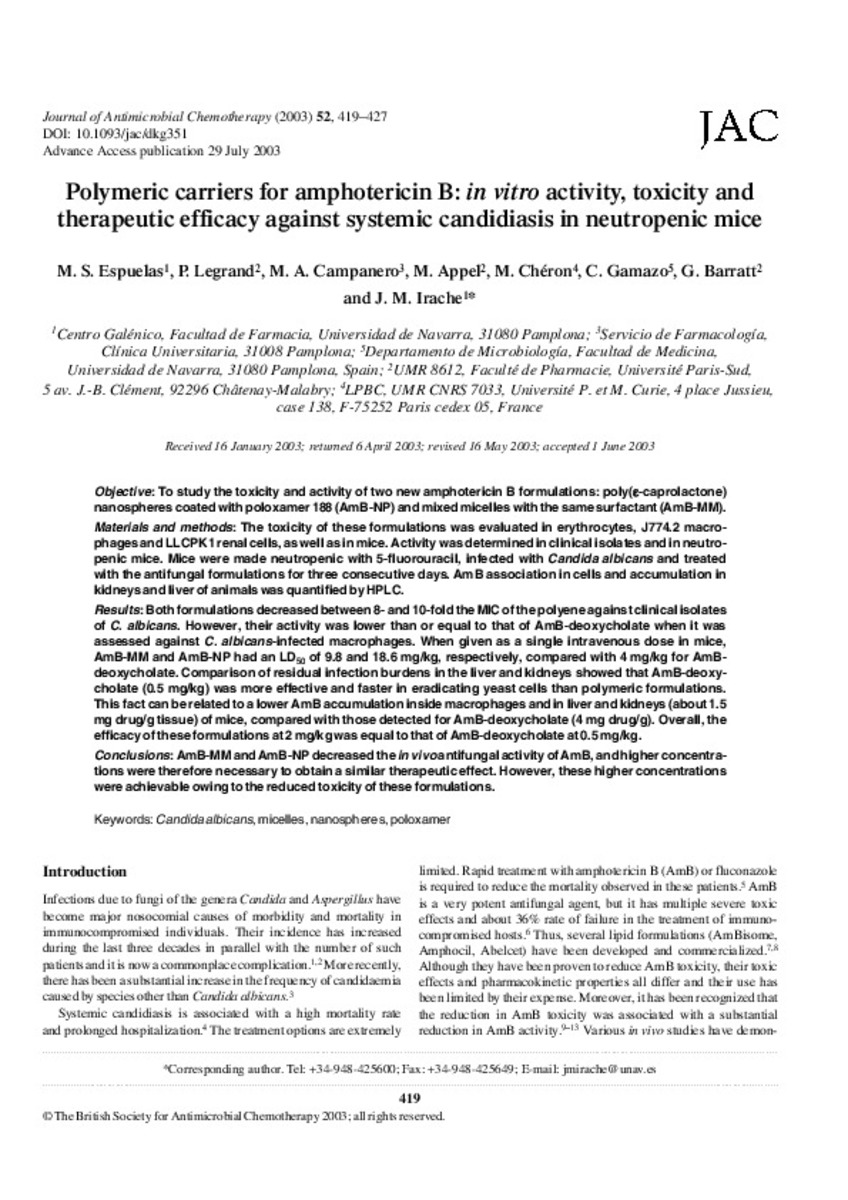Polymeric carriers for amphotericin B: in vitro activity, toxicity and therapeutic efficacy against systemic candidiasis in neutropenic mice
Palabras clave :
Amphotericin B
Candida albicans
Micelles
Nanospheres
Poloxamer
Fecha de publicación :
2003
Editorial :
Oxford University Press
Cita:
Espuelas MS, Legrand P, Campanero MA, Appel M, Cheron M, Gamazo C, et al. Polymeric carriers for amphotericin B: In vitro activity, toxicity and therapeutic efficacy against systemic candidiasis in neutropenic mice. J Antimicrob Chemother. 2003 Sep;52(3):419-27.
Aparece en las colecciones:
Estadísticas e impacto
0 citas en

0 citas en

Los ítems de Dadun están protegidos por copyright, con todos los derechos reservados, a menos que se indique lo contrario.










